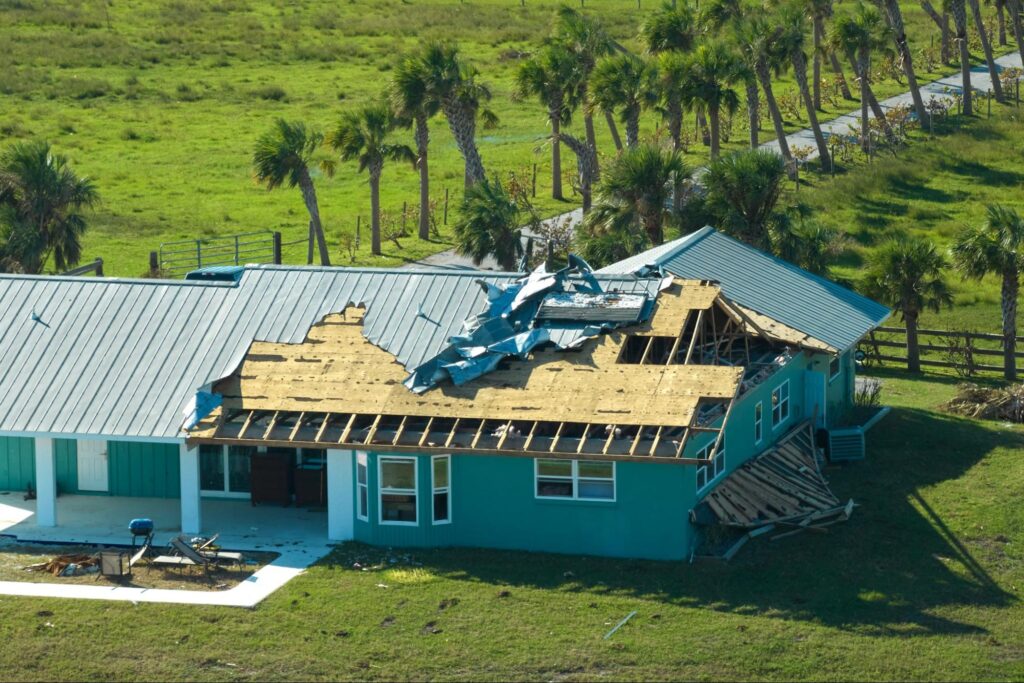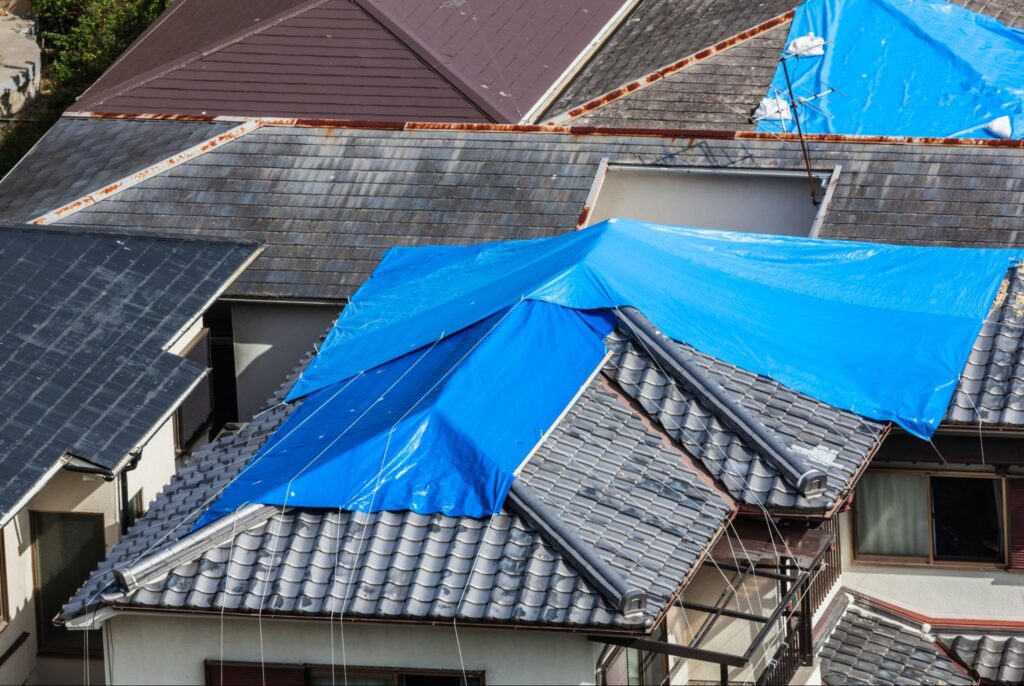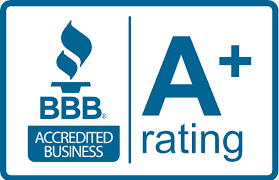
A failed roof disrupts your life; it’s not just a simple problem. Leaks, holes, or structural collapse are more than a mess. They affect your safety, property value, and peace of mind. Some roof issues can wait; others need fast, professional attention. Knowing what counts as emergency roof repair helps you respond before things worsen. Acting quickly keeps the damage contained and protects your investment.
Defining Emergency Roof Repair
Emergency roof repair means immediate work is needed to stop fast-moving damage. It targets structural threats or hazards that could escalate within hours. That isn’t the same as planned maintenance or cosmetic upgrades. These repairs often follow storms, impact events, or sudden failures. The goal is to secure your home or building quickly and prevent secondary issues like mold, wood rot, or insulation damage. Timing matters because delays amplify repair costs and risk.
How Roof Emergencies Usually Begin
Most roofing emergencies result from weather, falling debris, or poor upkeep. Strong winds lift shingles, tree limbs crash through decking, and ice dams create water backups that infiltrate through nails and seams. Fires can warp framing and burn away barriers, and minor leaks that weaken the underlayment can lead to collapse. Some emergencies build over time, while others happen in a flash. Regardless of the trigger, the structure becomes weak once protective layers are breached. That vulnerability is what makes fast action critical.
What Makes it an Emergency
A missing shingle or cracked tile isn’t always urgent, but damage that exposes the roof deck or attic to rain becomes a priority. The key distinction is exposure and whether water is actively entering or the roof structure is shifting. Many homeowners misread non-emergencies as critical, making professional inspection essential. What looks small from the ground can hide deeper issues, while apparent damage might not be as urgent. The risk lies in guessing wrong and letting problems escalate. That’s where expert guidance can prevent unnecessary repairs or costly delays.
How to Identify Emergency Roof Damage
Recognizing early signs of roof failure helps you act before conditions worsen. Emergency damage isn’t always dramatic at first glance, and subtle symptoms like ceiling stains or attic odors often go unnoticed. The faster you detect damage, the fewer repairs you’ll need later. Visual checks after storms or unusual weather are a smart habit. Water, movement, or sagging always deserves closer attention. Responding early can mean the difference between a patch and a replacement.
Active Leaks or Indoor Dripping Water
If water is dripping indoors, your roofing has likely failed, and water intrusion can lead to stained ceilings, warped floors, and electrical hazards. It often means the leak has reached past the shingles into the insulation and rafters. Waiting even one day can cause mold growth, drywall collapse, or circuit issues. Use a bucket to catch water and call a professional roofer immediately. Do not ignore even slow, steady drips; they’re not minor. Once water gets in, it finds its way to everything below.
Missing, Curled, or Broken Shingles
Wind can lift and tear off shingles, exposing the surface underneath and allowing moisture to seep in. While a few shingles might not seem urgent, their location matters, especially near valleys or flashing. Water enters faster when these vulnerable spots are exposed. A roofing contractor can assess urgency based on layout and local climate conditions. Inspecting early is always safer than fixing what could have been avoided. Minor damage becomes widespread quickly when left unchecked.
Sagging Areas or Visible Roof Line Dips
When a roof sags, the internal structure could be compromised, often pointing to soaked decking or deteriorated rafters. Long-term leaks may have caused slow rot in older homes that weakens support. Structural sagging is dangerous and may precede partial collapse if ignored. Avoid entering attics with visible sag or shifting frames, and never attempt to prop them up yourself. Sagging shows that the roof’s load-bearing system is under stress. This condition needs professional attention right away.

Visible Holes or Impact Damage
Storms and falling debris can create obvious roof punctures; even a small opening can let gallons of water in. Hail can crack tiles or damage seams around chimneys and vents, creating pathways for moisture. If you can see daylight through your roof from inside, that’s an emergency. Likewise, if debris is lodged in your roof, avoid removing it yourself; contact roofing experts who can handle it safely and prevent secondary issues. Acting quickly minimizes water intrusion and structural decay.
Common Emergency Roof Repair Situations
Due to the scale and speed of damage, certain events are nearly always emergencies. These include natural disasters, fire events, and impacts from trees or objects. Immediate repair helps prevent complete structural loss or high restoration costs. Knowing the qualifying situations saves time and confusion when you’re under pressure. Fast recognition of the issue enables you to choose the correct response.
Damage from Wind, Rain, or Hail
Storms can tear off shingles, loosen flashing, or dump inches of rain in hours, leaving your roof vulnerable. Wind uplift removes materials from the edges, allowing water intrusion that spreads rapidly. Hail breaks tiles and bruises asphalt shingles, weakening their integrity and shortening roof lifespan. Post-storm inspections are critical, even if you don’t see water immediately. What looks fine from the ground might hide broken seals or punctures. Hidden damage turns into leaks without warning.
Fire or Electrical Short Roof Damage
Fires often damage more than what’s visible, as heat warps sheathing and dries out framing, making it brittle. Firefighters’ water hoses add moisture that seeps deep into insulation layers and attic voids. After fire suppression, roofs often look intact but aren’t structurally sound. A roof inspection must follow any residential or commercial fire event. Timely checks can prevent total roof failure and help validate insurance claims. Structural safety always comes first after a fire.
Tree Falls or Structural Collapse
Tree limbs and full trees can crash into roofing systems during storms, crushing beams and piercing shingles in one blow. Even partial impacts shift weight loads and compromise support structures. Roofs that cave or bend under this pressure need fast reinforcement. Even if damage appears localized, it may extend across the frame. Structural collapse may also stem from snow weight or aging materials. Ignoring these signs invites total failure.
Ice Dams and Snow Buildup Issues
In colder regions, snow and ice buildup create emergency conditions as ice dams trap melting snow, pushing it under shingles. Over time, this leads to slow leaks, rot, and warped structures that can collapse under weight. Flat or low-slope roofs are especially vulnerable to this kind of failure. Snow load adds thousands of pounds to the structure, risking failure if not addressed. Quick snow removal can prevent water intrusion and collapse. Ignoring it risks severe damage.
What to Do While Waiting for Emergency Roof Repair Service
Taking the proper steps before your roofer arrives can reduce further damage, but safety should always come first. Do not climb on the roof unless you are trained and the conditions are safe. Secure the area below the leak and clear furniture from harm’s way. Temporary measures can reduce damage, but nothing replaces proper repair. Help will come quicker if you document the problem.
Cover Leaks With Tarps if You Can
If safe, use a waterproof tarp to contain a leak and temporarily protect interior ceilings and walls. Anchor the tarp securely to avoid wind displacement that worsens exposure. Indoors, place buckets or containers under leaks to catch water and move furniture away from the drip zone. This buys time and minimizes interior water damage until the roofers arrive. Avoid steep areas or wet surfaces while doing this. Stay focused on reducing the risk.
Shut Off Power Near Water Leaks
If water is dripping near outlets or fixtures, shut off the power to prevent fire and shock hazards. Water conducts electricity, creating a serious risk in affected rooms. Never use light switches or devices in areas where leaks are active. If the electrical panel is affected, contact an electrician before doing anything else. Protecting your home starts with safety first. Stay clear of all wet zones until help arrives.
Take Photos and Contact Insurance
Document damage thoroughly, and use your phone to take photos of the roof and the interior. Get different angles and lighting so nothing is missed. Contact your insurance provider and describe the event clearly and calmly. Save receipts for any temporary supplies, like tarps or containers, that may be reimbursable. These steps help validate your emergency claim quickly. Accuracy can speed up your approval process.
Why Emergency Roof Repairs Can’t Wait
A fast response prevents property loss and health issues because once breached, water spreads rapidly through insulation, walls, and flooring. Roofs are layered systems, and when one layer fails, others follow. Delaying repairs often causes mold growth that can affect your health. It also weakens structural framing, increasing future costs and repair time. In some areas, waiting risks insurance claim denial. Quick action pays off in every way.
Cost of Waiting Grows Quickly
Leaks that go untreated cause ceiling stains, electrical issues, and warped floors; mold remediation alone can exceed thousands of dollars. Interior repairs often cost more than the roof fix itself. By acting fast, you limit these expenses and avoid complete rebuilds. It’s easier to repair one layer than rebuild multiple rooms. Catching problems early keeps your budget in control. It’s a smart financial move.
Your Home’s Safety is at Risk
Unstable roofs threaten occupants below, and sagging structures, wet drywall, and falling debris put families at risk. Pets and children are especially vulnerable in compromised spaces. Emergency roof repair restores a safe, dry environment you can confidently live in. It also protects the building’s value from long-term damage. A secure roof means a stable home. You can’t afford to wait.
Schedule Emergency Roof Repair Without Delay
Roof damage won’t fix itself; the longer it’s exposed, the faster the problems spread. Professional repair services can prevent lasting harm and restore safety quickly. Don’t second-guess the urgency if your home or building shows any of the above signs. Contact a trusted, local roofing contractor immediately to minimize long-term risks. Immediate help protects what matters most: your home, health, and future. A stable roof starts with a smart call.
Stay ahead of roofing issues before they turn into emergencies. Explore the Faircloth Roofing, Inc. blog for thoughtful, practical guidance.






